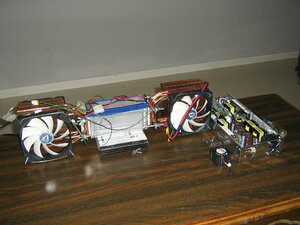BrainEater
[H]ard|Gawd
- Joined
- Jul 21, 2004
- Messages
- 1,210
Woop !
I did a test of my watercooling setup, d5 vario from a reservoir of my own design to dual socket 3647 cpu blocks.
Seems to work quite well, however I have some questions.
---
So a G1/4 watercooling fitting uses the o-ring to provide seal. The threads only provide 'compression' for the O-rings.Is there any reason NOT to use something like a medium strength threadlocker to keep things from unscrewing ?
--
Radiators :
I have to assume if you are using a radiator horizontally , barbs 'down' is bad.
I'm sure I'll think up a couple more dumb questions ,
TYIA all the same !

I did a test of my watercooling setup, d5 vario from a reservoir of my own design to dual socket 3647 cpu blocks.
Seems to work quite well, however I have some questions.
---
So a G1/4 watercooling fitting uses the o-ring to provide seal. The threads only provide 'compression' for the O-rings.Is there any reason NOT to use something like a medium strength threadlocker to keep things from unscrewing ?
--
Radiators :
I have to assume if you are using a radiator horizontally , barbs 'down' is bad.
I'm sure I'll think up a couple more dumb questions ,
TYIA all the same !
![[H]ard|Forum](/styles/hardforum/xenforo/logo_dark.png)



